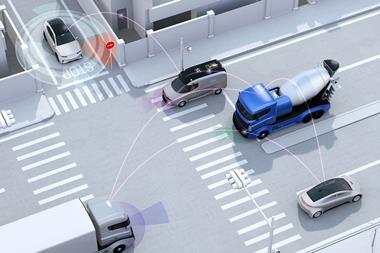’If adopted on a mass market basis, then it can cater to all,’ says chief data officer
With the cost of collecting and leveraging data having dramatically reduced over the past 15 years, along with rising motor premiums and increased instances of fraud and vehicle theft, many insurers are considering new applications for driving data on a mass market basis.

Penny Searles, chair of Howden Driving Data, told Insurance Times that driving data in the UK has primarily been used to identify poor or dangerous driving in the young driver market by insurers since 2007.
Telematics-based motor insurance policies utilise a device – also known as a black box – to track a combination of driving behaviour, location, time spent driving, distance driven and speed, among other factors.
By leveraging this data, insurers are able to offer reduced premiums to certain customers that present lower risks, with the approach being particularly popular among younger drivers.
Younger drivers
According to GlobalData’s 2022 UK Insurance Consumer Survey, younger consumers have shown an increased interest in telematics insurance.
The survey revealed that 12.7% of individuals under the age of 30 were using a telematics insurance policy via an app or smart device, while 20.7% were covered by a telematics policy using a black box.
Read: Howden announces UK launch of telematics service to help cut motor premiums
Explore more telematics-related content here or discover other news analysis stories here
Given the potential for telematics devices to encourage safer driving behaviours via reduced premiums in the riskier younger driver customer segment, insurers have seized upon this opportunity.
In 2005 Aviva launched a telematics insurance product named Quotemehappy Connect, specifically designed to provide motor coverage for younger drivers. This app-based insurance product rewarded safe driving behaviour with e-vouchers and premium discounts.
The insurer stated that the new product was aimed at drivers aged between 17 and 29, providing them with a weekly driver rating along with a breakdown of their driving behaviour.
Driving behaviour was categorised into different coloured ratings – red, amber, green, or gold – with customers rated as green or gold able to exchange reward points for vouchers.
Matthew Washer, head of connected motor at Aviva, said: “Traditional black box telematics insurance policies have become an established way for young drivers to monitor their driving and reduce premiums.
“However, technology has moved on and the new app allows drivers to monitor their driving without the need for a black box to be professionally fitted to their car.”
Howden Drive
Meanwhile, Searles noted that telematic driving data can be effectively utilised for purposes beyond analysing driving behaviour in young people.
She explained that the UK “has mainly been focused on using telematics in the high-risk young driver segment,” but that it could also cater to a mass market by targeting an older demographic.
Read: Telematics allows consumers to take an ‘active part’ in their risk profile – Redtail Telematics
Read: Motor manufacturer data could be the ‘Holy Grail’ for improving telematics insurance
Explore more telematics-related content here or discover other news analysis stories here
These comments followed after Howden launched its motor telematics data service Howden Drive in the UK at the end of May (31 May 2023).
A statement released at launch said the telematics app and data beacon had been designed to help lower insurance premiums for customers, optimise loss ratios for brokers and insurers and improve road safety.
The UK launch came after Howden rolled out the product in Europe, where it has been used by over 250,000 policyholders since 2018.
Searles explained: “The Howden data sets collected cover a vast range of information – not just how people drive, or how many miles they do.
“It can be used as a standard data enrichment tool to provide ongoing validation of the risk data set provided at inception.
“While it has been tested outside of the UK and in the young driver market here, it has never been applied on a mass market basis by insurers and brokers.”
Tommy Ahearne, chief data officer at Howden Driving Data, explained that the UK has focused on the young driver market and “very few policies have been written outside of this demographic”.
“If adopted on a mass market basis, then it can cater to all,” he explained.
Older drivers
But how can the insurance market sell the benefits of telematics insurance policies to those outside of the traditional younger age bracket, especially when black boxes are often seen as driving surveillance devices by policyholders outside of that bracket?
A study conducted for the RAC Foundation, published 27 January 2020, assessed international research concerning the safety of older drivers, revealing that senior citizens exhibit skill in adapting their driving habits, such as steering clear of night driving and rush hours, as they acknowledged their diminishing abilities.
Read: Is telematics set for a popularity boost following FCA’s fair value changes?
Explore more telematics-related content here or discover other news analysis stories here
Nevertheless, the implementation of in-car telematics systems, similar to those utilised in insurance policies for young drivers, could present another efficacious avenue, suggested RAC Foundation.
Julie Gandolfi, the report author, explained: “Never before have older drivers had access to so much assistance from vehicle technology and whilst there were early concerns about a lack of technological familiarity on their part, the literature suggests that appetite among the older driver population for engagement with vehicle technology does exist.
“With appropriate training and guidance, it can offer significant safety benefits and help extend safe driving into older age.”
Meanwhile, a pay-by-mile approach, though still requiring a black box, has also grown as an option for older drivers to make motor insurance more affordable.
In May, insurer Admiral, in collaboration with Ford Smart Mobility and Redtail Telematics, launched a connected car telematics product.
This product allowed Ford vehicle owners with a FordPass Connect Modem manufactured from 2021 onwards to effortlessly share driving data directly collected from their car, eliminating the need for box installations.
So, does the traditional embrace of telematics driving data for younger demographics foreshadow its potential triumph in the broader mass market?
Hosted by comedian and actor Tom Allen, 34 Gold, 23 Silver and 22 Bronze awards were handed out across an amazing 34 categories recognising brilliance and innovation right across the breadth of UK general insurance.



















































No comments yet